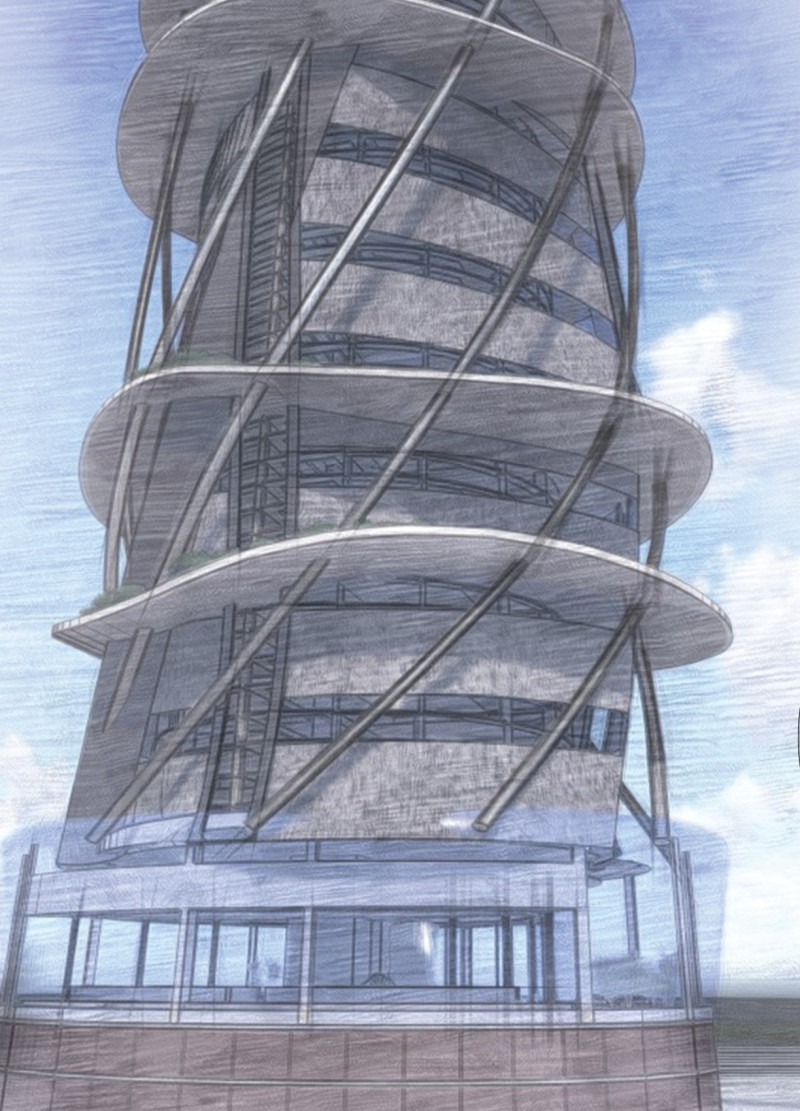5 key facts about this project
At its core, Sonumbra serves multiple functions, including residential spaces, commercial areas, and community gathering spots. The design is organized around a central circular theme, which not only symbolizes unity but also facilitates smooth circulation throughout the space. This circular layout encourages interaction among residents and visitors, fostering a sense of community that is vital in densely populated urban areas.
The architectural language of Sonumbra is characterized by its integration of natural elements with modern materials. The use of reinforced concrete provides structural stability, ensuring durability in a bustling city like Mumbai. Extensive glass facades are strategically placed to invite natural light into the interiors, creating bright and inviting spaces that minimize the need for artificial lighting. The warm tones of wood cladding introduce an organic feel, bridging the gap between the built environment and the natural world.
One of the notable features of Sonumbra is its commitment to sustainable practices. The project includes green roof systems, which not only reduce heat absorption but also play a role in enhancing local biodiversity. This approach reflects a deep awareness of ecological responsibilities, allowing the architecture to coexist with its environment. Additionally, the design incorporates a solar canopy that harnesses renewable energy, underscoring the project's commitment to sustainability and innovation.
In the context of community engagement, Sonumbra includes thoughtfully designed spaces such as exhibition areas and communal gardens. These spaces not only serve functional purposes but also act as cultural conduits, representing Mumbai's rich heritage and facilitating artistic expression. The incorporation of aquatic life education areas resonates with the city’s maritime history, offering visitors an immersive experience that connects them to their surroundings.
Unique design approaches are evident within the project’s layout and material choices. The circular design, while aesthetically pleasing, serves a practical purpose by facilitating pedestrian flow and access to essential amenities. Each courtyard integrates greenery, providing residents with tranquil outdoor spaces that promote relaxation and socialization. The careful selection of materials is not only visually appealing but also aligns with the project's sustainability goals, allowing for energy efficiency and long-term viability.
The integration of architectural plans, sections, and designs utilized throughout the project effectively communicates the intention behind Sonumbra. These architectural elements provide insights into the structural and aesthetic decisions made by the design team, showcasing their expertise. The balance between practical living spaces and artistic representation makes Sonumbra a compelling study within contemporary architecture.
For those interested in gaining further insights into this project, exploring the detailed architectural plans and sections will provide a more comprehensive understanding of how Sonumbra functions and its innovative design strategies. The project stands as a testament to how thoughtful architecture can respond to the challenges of urban living while fostering community and ecological awareness.


























